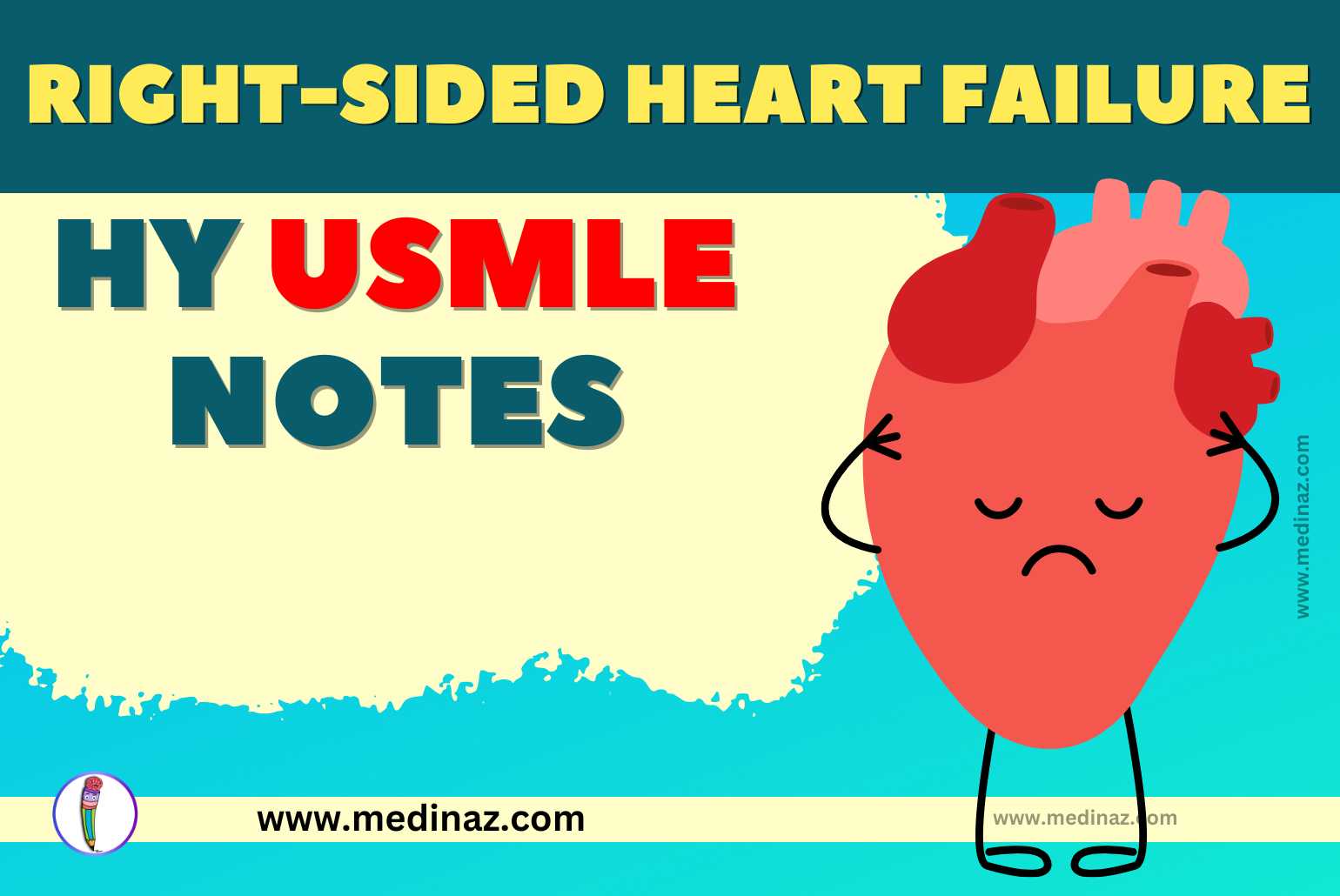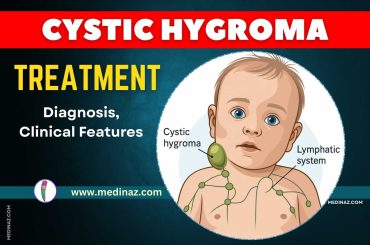Right-Sided Heart Failure USMLE Notes & Mnemonics contains all the high-yield points you need to know.
Definition:
- Right-Sided Heart Failure: Occurs when the right ventricle fails to pump efficiently, leading to a backup of blood in the venous system and reduced forward blood flow.
Etiology:
- Often secondary to left-sided heart failure.
- Primary causes include chronic lung diseases (cor pulmonale), pulmonary hypertension, valvular heart disease (tricuspid or pulmonic valve), congenital heart defects. (Ref)
Pathophysiology:
- Impaired right ventricular function → increased venous pressure → systemic venous congestion.
Clinical Features:
- Jugular Venous Distension (JVD): Increased venous pressure visible in the neck.
- Peripheral Edema: Swelling of the ankles and feet.
- Ascites: Accumulation of fluid in the abdomen.
- Hepatomegaly: Liver enlargement; may progress to congestive hepatopathy.
- Anorexia and Nausea: Due to congestive hepatopathy and GI congestion.
- Fatigue and Weakness: From reduced cardiac output.
Diagnosis:
- Echocardiogram: Assess ventricular function, valvular heart disease, pulmonary pressures.
- Chest X-Ray: May show enlarged cardiac silhouette, pulmonary congestion.
- BNP/NT-proBNP Levels: Elevated in heart failure.
- ECG: May show evidence of right ventricular hypertrophy or strain.
Management:
- Treat Underlying Cause: E.g., management of left-sided heart failure, pulmonary hypertension.
- Diuretics: To reduce fluid overload.
- Salt and Fluid Restriction: To reduce fluid retention.
- Oxygen Therapy: For hypoxemia.
- Positive Inotropic Agents: In severe cases (e.g., digoxin).
- Vasodilators and ACE Inhibitors: Used cautiously due to potential for reducing right ventricular preload.
Mnemonic: “RIGHT FAILURE”
- Right ventricle dysfunction
- Increased venous pressure
- Girth increase (ascites, edema)
- Hepatomegaly
- Tricuspid valve disease (commonly involved)
- Fatigue
- Anorexia/nausea
- Increased JVD
- Less oxygenation (hypoxemia)
- Underlying lung disease (cor pulmonale)
- Reduced cardiac output
- Edema (peripheral)
Chart: Key Features and Management of Right-Sided Heart Failure
| Feature | Description | Management Strategy |
|---|---|---|
| Jugular Venous Distension | Visible neck vein distension | Diuretics, salt/fluid restriction |
| Peripheral Edema | Swelling in ankles and feet | Diuretics, elevation of limbs |
| Ascites | Fluid in abdomen | Diuretics, salt/fluid restriction |
| Hepatomegaly | Enlarged liver | Treat underlying cause |
| Echocardiogram Findings | Reduced RV function, valve abnormalities | Guided medical therapy |
Note: In USMLE, focus on recognizing the signs and symptoms of right-sided heart failure, understanding its pathophysiology, especially when secondary to left-sided heart failure or pulmonary pathology, and knowing the general principles of management. The role of diuretics in managing fluid overload is particularly important.
Check other important USMLE Notes
A Visual Learning Platform





